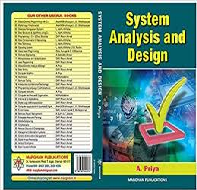Computer Program and System Analysis and Design Order Instructions: Write in the steps (processes) that you observed (when you played Sudoku) and documented that will allow a “user” to complete the puzzle. Sudoku is completely logic based and therefore lends itself quite well to becoming a computer program or application.

Any systematic series of steps can be developed into an application.
Basically, write down all the steps how to solve a puzzle explaining to someone that doesn’t know how to play this game.
Computer Program and System Analysis and Design Sample Answer
System Analysis and Design
Sudoku is a popular puzzle and numbers game that is played all over the world by a lot of people. The game is played on a grid of 9×9 spaces. Each square in a column or a row needs to be filled out with numbers 1-9, without repeating any numbers in the row or column (Wang et al., 2015). Initially, the grid comes with five places already filled in. However, as the spaces get filled the game gets easier though it sounds complex and difficult at the initial stages. There are typically many ways to play the Sudoku game. It is like a puzzle that needs to be filled with puzzle pieces. These puzzle pieces are the remaining number to be filled out in the rows or columns. This paper is going to show us the appropriate method for solving this kind of puzzle.
Step 1: Look through the grids to scan for the missing numbers.
Step 2: Identify the grid that has the least amount of missing numbers. This will help in filling out the easiest grids first.
Step 3: By seeing which numbers are missing from the grid or square, use deductive reasoning and process of elimination to decide which numbers will fill in the blank spaces (Wang et al., 2014). If you fail to deduce clearly the numbers to be filed in. Try another square or grid and put it through the same process. But don’t guess.
Step 4: Repeat the above steps from step one after following through the three steps first.
Ideally, there are million varied combinations of numbers that can fill the blank spaces in the grid. However, one important thing to consider is that the game is based on the simple principles of using the numbers 1-9 to fill in the blank spaces using deductive reasoning and elimination process without repeating any number in a row or column.
Computer Program and System Analysis and Design References
Wang, L., Ni, H., Yang, R., Pardalos, P. M., Du, X., & Fei, M. (2015). An adaptive simplified human learning optimization algorithm. Information Sciences.
Wang, L., Ni, H., Yang, R., Fei, M., & Ye, W. (2014). A Simple Human Learning Optimization Algorithm. In Computational Intelligence, Networked Systems and Their Applications (pp. 56-65). Springer Berlin Heidelberg.




